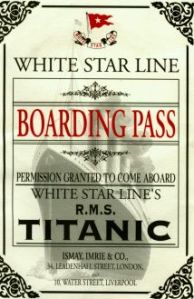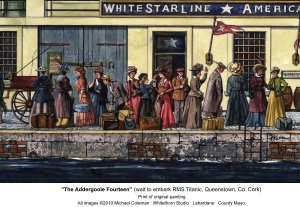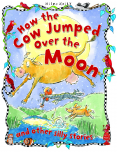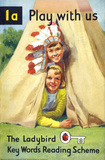I often get asked why I am so fascinated by the Titanic. Why does this tragic event hold such interest for me? Why did I write a book about it? Many people presume I have a distant relative who sailed on Titanic, or that I have some vague connection to the White Star Line or the shipyards in Belfast.
I don’t.
In fact, there is very little to connect me to Titanic at all – other than a long held fascination with the story of the unsinkable ship of dreams and all its amazing stories of survival, unimaginable tragedy and heart-breaking loss.
But there have been other great disasters, other dramatic, historical events. So, what is it about Titanic in particular which continues to fascinate me – and thousands of others?
Liam Kennedy, Professor of Economic and Social History, Queen’s University Belfast believes that our fascination with Titanic is a combination of many things. ‘There is no simple answer because there are so many reasons for it. Interestingly, there are other events which have had much greater historical significance, but with Titanic, it is the human element which has such universal appeal. It is the contradiction between the arrogance of those who boldly claimed she was unsinkable and the almost unbelievable fact that she did sink.’
Perhaps one of the most interesting human aspects of Titanic was the manner in which it encapsulated the social class system which was in place at the time. ‘People are, of course, always fascinated by social class and it was shown so starkly on Titanic,’ comments Professor Kennedy. ‘The passengers were layered according to income and wealth in a manner which saw absolute luxury and poverty co-existing. In many ways, Titanic was a floating microcosm of wider society, producing – for perhaps the first time – an incredible physical proximity of social classes.’ The fact that these social class divisions still held, even at the height of the disaster – determining who got into the lifeboats first and even the order in which survivors disembarked the rescue ship, Carpathia, – is unimaginable to us today.
The timing of Titanic is also vital in the fact that it continues to captivate us, happening, as it did, at a pivotal time in history. ‘There are many other maritime disasters which are much more intriguing and have far greater historical significance,’ comments Michael Martin, founder of the Titanic Trail in Cobh. ‘The sinking of the Lusitania off the Head of Kinsale in 1915 didn’t get the same attention as Titanic because it happened during a war and there was another disaster shortly afterwards. In many ways, 1912 was a slow news year compared to what followed in the years after.’
Professor Kennedy agrees that the timing of Titanic is an important factor in its continued legacy. ‘Titanic happened at the time when radio communication was a relatively new invention. It was therefore the first major news event of the 20th century, and the first to be broadcast around the western world. Similarly, 9/11 happened at a pivotal moment of US foreign policy. All disasters are dreadful, but some carry a heavier charge than others because of the time at which they happen.’
And of course it is also the ship itself which continues to grab our attention. ‘In Belfast, people were so involved and so proud of the ship and the achievement of the shipyards in building Titanic,’ comments Professor Kennedy, ‘and yet, it is the themes of humankind and technology which also play a part in our continued fascination with the event. Yes, the technological achievement of Titanic was progressive and liberating, but the sinking is a harsh reminder that technology can also carry dangers – something we have seen occur again and again since Titanic.’
Interestingly, Titanic wasn’t the first liner to be built to such high standards. ‘Titanic was a replica of its sister ship Olympic,’ remarks Michael Martin. ‘It was actually the Olympic which was the first ocean liner to set the new standards in engineering and ship building innovation. Much of the innovation created for Olympic was simply replicated on Titanic. The ship itself wasn’t anything particularly new, it is the tragedy and the fact that it occurred on the much-hyped maiden voyage that has made people fascinated.’
The Titanic tragedy has, of course, been recreated innumerable times in movies and novels. Just four weeks after the disaster, the first Hollywood movie was made, starring silent movie actress Dorothy Gibson who was on Titanic and wore the same dress for the movie as she wore on the night of the sinking. ‘What has made Titanic so permanent is Hollywood’s preoccupation,’ comments Michael Martin. ‘Titanic also sank at the dawning of the film industry and the story has been told over and over again, utilising new technology as it was developed.’
This was certainly seen with James Cameron’s 1997 Hollywood epic which was inspired by his own fascination with shipwrecks. Cameron is quoted as calling Titanic ‘the Mount Everest of shipwrecks’. Interestingly, it was diving to the wreck of Titanic he was initially interested in and requested Hollywood funding for, not making a movie about it.
Although many of us are fascinated by Titanic’s opulence, grandeur, size and the romantic notion of sailing across the Atlantic Ocean, we forget that this was an extremely ordinary event in 1912. ‘Huge liners calling into Cobh was a normal, everyday occurrence at the time,’ comments Michael Martin. ‘Titanic’s was just another routine visit on an ordinary day.’
Ultimately, Titanic was the most tragic of accidents. We simply cannot believe that this really happened; that such a huge vessel sank with such a devastating loss of life. Perhaps we are fascinated by the notion of what we would have done in those circumstances. It is the ‘what if’ factor which events such as Titanic, 9/11, the Indonesian tsunami and even the recent Concordia ferry disaster, continue to show that tragedy on a massive scale, can and will continue to affect and fascinate us.
Whatever the many and varied reasons for our fascination with her story Titanic’s tragic allure will, undoubtedly, only grow stronger over time.
The Girl Who Came Home is available now on the Amazon Kindle store and will soon be available in paperback.











